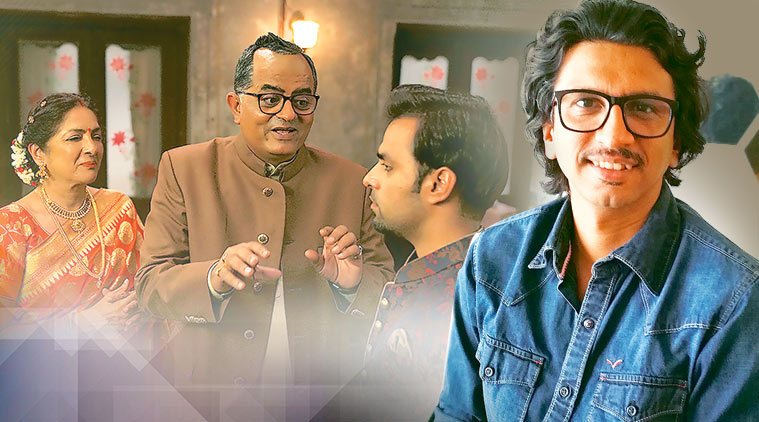Sunday Long Reads: Of theatre, food, wildlife, sedition, urban heritage, masculinity, and more
Your Sunday reading list is here!
 A scene from the performance of Macbeth (Photo: Chorus Repertory Theatre)
A scene from the performance of Macbeth (Photo: Chorus Repertory Theatre)
How Ratan Thiyam brought Manipur onto the global stage
When he was a young boy, Ratan Thiyam, 72, dreamt of going to Cuba to become a revolutionary like Che Guevara. “I read his books and was inspired by his ideas and way of life,” he says. Thiyam’s rebellion expressed itself through theatre. For 45 years, his plays have challenged power — whether it was the colonial hangover that prevented India from finding pride in its ancient traditions after Independence or our inherited stereotypes about good and evil — by subverting them in form and content.
Why governments like to use the sedition law
 Amulya Leona, 19, was arrested on charges of sedition from a public event in Bengaluru (Source: AP)
Amulya Leona, 19, was arrested on charges of sedition from a public event in Bengaluru (Source: AP)
The extraordinary PTI photograph of 19-year-old Amulya Leona which travelled all over social media doesn’t really belong on a newspaper of HTML page. It belongs in a European museum, alongside Fra Angelico and Andrea del Sarto. Beset by two policemen — one resolute, rampant, the other frightened, couchant — and a man amazed, regardant, along with the principal accused holding up her finger for silence, it recalls the era of painting in Italy in which every person depicted a fragment of a story, which their expressions wrote on the canvas. The tableau recalls the tribulation and triumph of saints.
WhatsApp Uncle realises that hatred only breeds hatred
 United we march forward: Republic Day parade rehearsal in Lucknow. (Photo: Vishal Srivastav)
United we march forward: Republic Day parade rehearsal in Lucknow. (Photo: Vishal Srivastav)
Bachchon, from my childhood to my old age…all many yrs of lyf…I had one favourite madhur geet…No my family it is not some filmy song or ghazal or even bhajan…it is hum honge kamyaab….in english, we shall overcome…today, i am promising u all 1 thing…i will never even gungunao that geet ever!!!!My family…i am crying so many tears of pain…my own pota and poti…beloved swastik and neha r sayin they will leave grp becoz im sharing links of fake news…saying all rioting ppl r Pakistanis….
Rahul Mehrotra: ‘Every emperor made a New Delhi’
 Rahul Mehrotra
Rahul Mehrotra
Rahul Mehrotra is one of the leading advocates for the conservation of urban heritage sites in India. Among his best-known projects is the restoration of Mumbai’s Oval Maidan. The architect,who shuttles between Mumbai and Boston, recently delivered the keynote speech at the India Design ID in Delhi. He shares his thoughts on the Central Vista redevelopment project and the importance of dialogue.
How Kolkata’s iconic cabin restaurants played a part in the freedom struggle
 Basanta Cabin (Photo: Neha)
Basanta Cabin (Photo: Neha)
Kolkata’s identity has, in many ways, been inextricably associated with the city’s vibrant food culture. However, even within the macrocosm of culinary diversity, the city’s cabin restaurants set themselves apart.
There are varying accounts of how these small local eateries, which first sprang up all over the city in the 19th century, came up. According to Utsa Ray, author of Culinary Culture in Colonial India (2014), these public eateries, the first of their kind in the country, allowed the common man to discover the “pleasures of eating out”. Consuming “new food”, writes Ray, “was not always possible within the domestic space”. According to Ray, hotels “formed a convenient locus for those who could easily gorge into a chicken cutlet without being concerned about polluting their home.”
Ann Cleeves: “I couldn’t work what would happen next, unless I killed somebody off”
 As the daughter of a village schoolteacher in rural England, Cleeves always felt like an outsider.
As the daughter of a village schoolteacher in rural England, Cleeves always felt like an outsider.
The car had broken down and it had been parked in the driveway outside Ann Cleeves’s house in Whitley Bay, Northumberland, for some time now — there was no money to get it fixed. Her husband Tim, a conservationist and bird watcher, worked for a charity, while she was employed at the local library and wrote in her spare time; running a household and raising two daughters on their meagre salaries often posed a challenge. One day, there was a letter in the post — it was from a publisher offering her a book deal for her crime novel, A Bird in Hand, along with a cheque for £500. “My first thought was that now we could mend the car,” says Cleeves, 65, a smile reaching her blue eyes, as she recalls that day in 1986 that had changed her life.
Jelili Atiku: “I use my body to make the audience feel pain”
 Atiku, 51, spoke about using his body as sculpture and healing through art.
Atiku, 51, spoke about using his body as sculpture and healing through art.
One of Nigeria’s pioneering performance artistes, Jelili Atiku is known to address sociopolitical and human-rights issues through his work. Conferred with the 2015 Prince Claus award, for his attempt to “…open up dialogue and influence popular attitudes”, he has performed at various prestigious platforms, including the 2017 Venice Biennale and the 2018 Manifesta. At his maiden performance in India at the India Art Fair last month, he emphasised on the need to embrace differences through his work Nobody is Born Wise. Atiku, 51, spoke about using his body as sculpture and healing through art.
Discovering the Serengeti’s natural wonders through the slow life
 Migrating elephants in Serengeti.
Migrating elephants in Serengeti.
We heard the first roar just as we were tucking into some delicious ugali (a type of porridge usually prepared from maize flour), stewed vegetables and assorted meats. A hush came over everyone in the dining-room tent. There we were, in the middle of the Serengeti in Tanzania, soon to retire for the night. And the pride of lions was near our campsite, marking its territory. This was more than the adventure we had signed up for! The staff assured us that we would not end up in the lions’ bellies — the fact that the camp existed was proof enough. Besides, they had plenty of tastier food just a huntaway. What really worked to make us go to our tent was a mixture of exhaustion and exhilaration.
Why a hawai chappal and instant noodles are exhibited in a Thai museum
 Museum Siam in Bangkok.
Museum Siam in Bangkok.
Why is there a hawai chappal in this museum, I wonder. I consider if it’s a prank. Then I notice packets of instant noodles — nicknamed “poverty index” and “dorm boy’s bae” — and a “lucky bag” (a paper bag used in the 1960s). The curious artefacts in this gallery, an information panel confidently vouches, can’t be found anywhere in the world apart from Thailand. While the flip flops, balms and beverages in plastic bags might be all too familiar to Indians, there are indeed objects unique to the country. The “coffee ears”, a flimsy strap of plastic looped around an iced coffee cup which keeps your fingers from getting clammy, or the cylindrical ticket-vending contraption that bus conductors carry are a few instances that have never failed to fascinate during my first few days there.
Bean-to-cup coffee making in a Coorg plantation
 The plantations offer homestays and resort, perched on stilts. (Photo: The Tamara Coorg)
The plantations offer homestays and resort, perched on stilts. (Photo: The Tamara Coorg)
The lashing rain from the night before had simmered to a soft drizzle this morning. The clouds had parted, and the sundeck of our wooden cottage, perched high on stilts, afforded a resplendent view of coffee country Coorg. The freshly bathed dimpled-green Western Ghat hills rolled away as far as the eyes could see. Acres and acres of coffee and spice plantations dotted the landscape, intermingling with lush forests. The gushing sound of a waterfall drifted in from close by, blending with the rustling of leaves. Below us, as our resort’s plantation was waking up, we set out to witness first-hand the journey of coffee — from bean to cup.
Down in Jungleland: A look into Monarch butterflies’s survival tactics
 The Monarch butterfly in the US is one of Mother Nature’s technological triumphs. (Source: Ranjit Lal)
The Monarch butterfly in the US is one of Mother Nature’s technological triumphs. (Source: Ranjit Lal)
Imagine this: You weigh less than one gram. You have tissue-thin wings, powdery to the touch — fiery orange and striped with black. Your filament-thin antennae and eyes are equipped with navigation and visual hardware that any GPS supercomputer would be proud to possess. If you break out of your chrysalis in around August or September — you are not interested in the opposite sex. Yet. But you do begin to hanker for mass company. You may be born in Canada or the Northeastern United States. Even if those countries have no time for kings and queens, you are called the Monarch. You don’t exactly have the aerodynamic shape of a bird. You fatten up on nectar, and wait until that day when an alarm clock goes off inside you.
Families in Food: An eatery in Delhi serves chhole bhature with a secret spice mix
 Actor Amitabh Bachchan, who studied at KMC, used to jump over the walls of his college to gorge on the famous “Chacha ke Chole,” (Source: Surbhi Gupta)
Actor Amitabh Bachchan, who studied at KMC, used to jump over the walls of his college to gorge on the famous “Chacha ke Chole,” (Source: Surbhi Gupta)
Walking around Kamla Nagar in north Delhi, you stumble upon a number of hattis (eateries). There are Kake Di Hatti, Om Di Hatti, Bille Di Hatti, Sardar Di Hatti, among others. One of the oldest and most popular among them is Chache Di Hatti in G-block market, close to Kirori Mal College (KMC), Delhi University. “Any student who has studied in the North Campus definitely knows about our shop and would have come here at least once,” says Kawal Kishor Saluja, the second-generation owner of the shop. And, he is not exaggerating. The eatery has been a haunt for several generations of students. Actor Amitabh Bachchan, who studied at KMC, used to jump over the walls of his college to gorge on the famous “Chacha ke Chole,” reminisces Kawal Kishor, 65.
Hitesh Kewalya: ‘There is a need to redefine masculinity’
 For Kewalya, the humour lies in how people go to extreme lengths to avoid talking about sex. (Designed by Gargi Singh)
For Kewalya, the humour lies in how people go to extreme lengths to avoid talking about sex. (Designed by Gargi Singh)
‘Sab mixed hai andar‘ (Everything is a blend within),” says writer-director Hitesh Kewalya, talking about how his exposure to a multicultural way of life has shaped his vision. His debut directorial venture, Shubh Mangal Zyada Saavdhan (SMZS), billed as the “first mainstream gay film,” released on February 21, and has received critical acclaim.
We begin our conversation with Delhi, a city he was born and grew up in, and which is central to his cinematic sensibility. “I lived at Malviya Nagar, where I still have a home. I come from a typical middle-class family, where the emphasis was on studies,” he says. His father, who worked at the National Thermal Power Corporation, was a film enthusiast, and would often take him to watch movies. Besides, dialogues and repartees had always been a way of life for the Kewalya family, courtesy their obsession with Bollywood. Even today, Kewalya converses in a manner as if he is spouting one-liners from the next film that he is writing. “I have always been a storyteller, but I sort of rambled through various mediums,” he says.


- 01
- 02
- 03
- 04
- 05





























